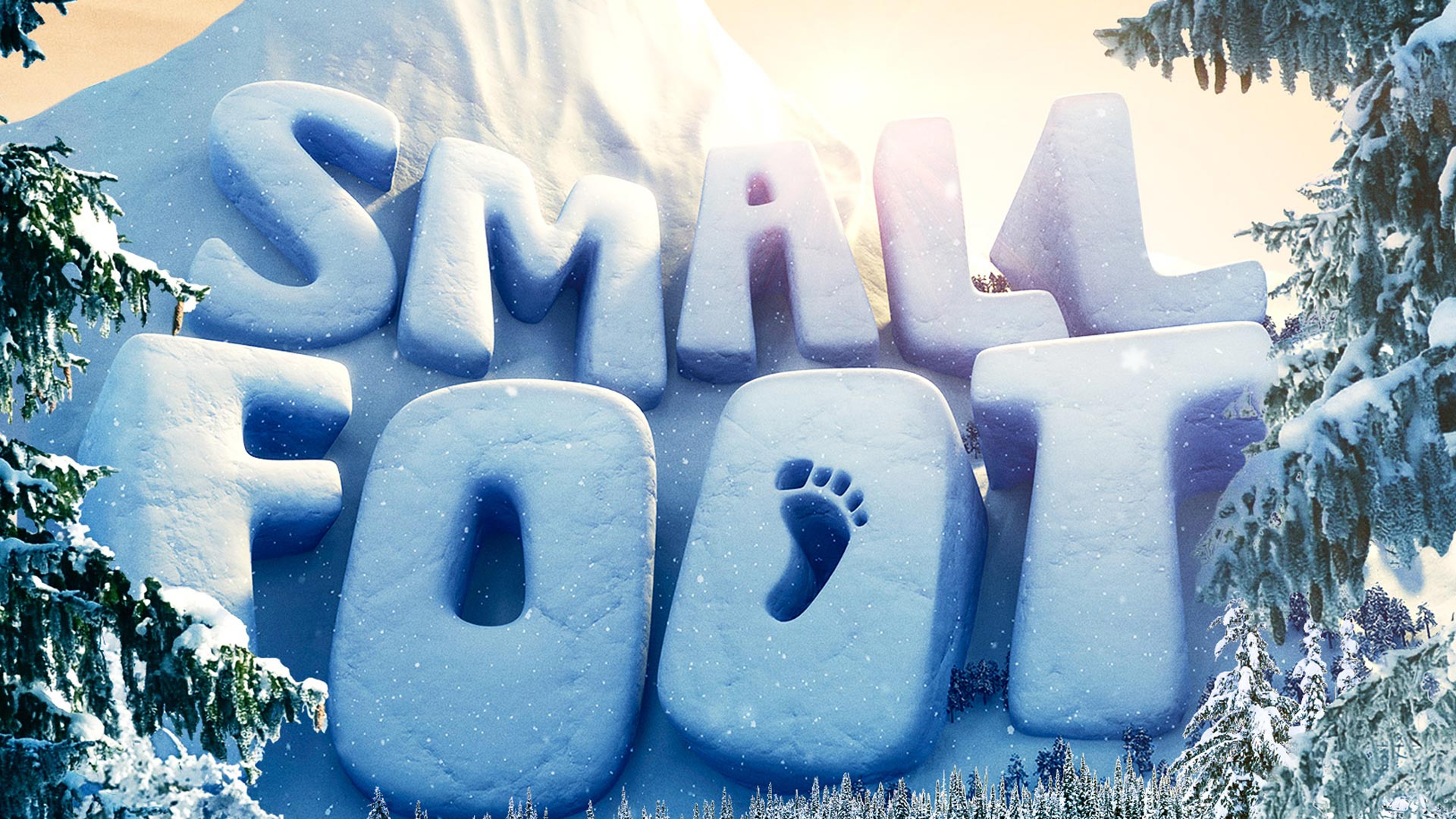Xenophobia has become a very hot topic in the modern era, to the point where it seems like even childrens’ media is starting to bring it up to a certain degree. This conceit in fact seems to be the very foundation of Warner Animation Group’s Smallfoot, a family-friendly animated romp that’s all about a colourful, zany take on fear of another culture, or in this case, another species. Inspired by the childrens’ book, Yeti Tracks, Smallfoot ties itself into a lingering myth, then flips the myth on its head to force audiences to confront the other side of a functioning society that we deem to be full of monsters.
It seems like a lot to think about for a September kids’ flick, and I will say that Smallfoot’s desire to ask some big questions with its social themes is pretty bold, and shows a clear effort to try and aim higher than many animated movies outside of the Disney/Pixar and Dreamworks Animation stables do. This shows, at the very least, a desire to further grow and mature by studio, Warner Animation Group, a subsidiary animation outfit that has done some wonderful things with the LEGO Movie brand’s three current offerings, but hasn’t yet been able to fully realize their big ideas outside of the LEGO Movie catalogue. The studio’s previous CG-made non-LEGO movie effort, 2016’s Storks, was a fun and well-animated flick, but one that also suffered from a flimsy storyline that made it disappointingly forgettable. That movie seemed like it leaned hard into appealing to children at the expense of appealing to adults as well, which left it feeling less well-rounded than many Disney/Pixar and Dreamworks Animation offerings.
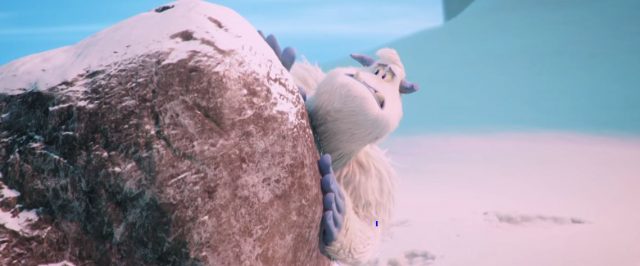
All in all, Smallfoot’s efforts to slip in some more inspired social commentary, and have more of a cultural impact, make it feel a bit more memorable and fleshed-out than Storks ultimately did, so I can safely say that Warner Animation Group does seem to be getting better during instances when they can’t make another LEGO Movie offering. Ultimately though, Smallfoot still isn’t perfectly realizing its ambitions, suffering from an overly convenient conclusion that somewhat wimps out of the intelligent debate it was trying to start for much of its runtime, while also inexplicably shoehorning in a bunch of musical sequences (yes, despite it not being evidenced anywhere in the marketing, Smallfoot is a musical for some reason), barring one standout number performed by Common in the lead-in to the third act. The superb lead cast and generally solid, slightly more restrained animation do make Smallfoot a solid September flick though, even for adults that aren’t bringing any children.
Channing Tatum headlines Smallfoot as Migo, a young citizen within a society of yetis that live upon a tall mountain. Migo is in training to become a gong ringer, which is believed to be the only way to make the sun rise among the yetis. After botching his first training day however, Migo ends up discovering a displaced human, known among the yeti society as a, “Smallfoot”, obviously an ironic reference to the human mystery of Bigfoot. Smallfoot thus entails Migo challenging the rigid, conservative order of yeti society by claiming proof that its divine rules about the existence of life are wrong, which leads him to join a society of Smallfoot truthers that are determined to expose the existence of humanity to the other yetis.
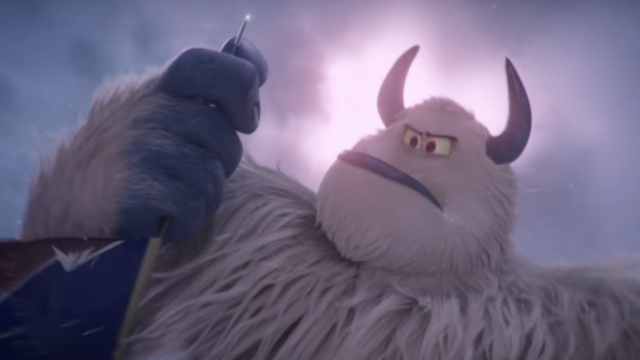
Immediately, you can see the shades of political talk seeping out from this central character arc of Migo’s, which is quite clearly rooted in modern hot takes like xenophobia, travel bans and racial profiling, especially when the reasons for the yetis’ living circumstances eventually become apparent. It’s all presented in a light-hearted, friendly way, of course, especially with so much of that high-energy slapstick comedy that Warner Animation Group seems to especially love, albeit not to the hyperactive extent that it displayed in Storks. The idea behind the implications of exposing an uncomfortable truth, seemingly at the expense of society’s stability, is one that Smallfoot touches upon in an interesting, inspired way, even if it doesn’t totally stick the landing there. Migo does still need to be a Hollywood hero after all, especially in a kids’ flick, which are usually especially disinclined to hit audiences with bitter, uncertain outcomes.
What is commendable about Smallfoot however is how it effectively avoids having a central antagonist, even when it seems like certain characters could easily slot into the typical bad guy role. Initially, Common’s yeti leader, Stonekeeper seems like an obvious antagonist-in-the-making, especially when he’s set up as the father of Migo’s love interest, Meechee, voiced by Zendaya, but ultimately becomes a surprisingly sympathetic personality later on, despite quite clearly working against Migo’s mission. Likewise, the main human character that ends up befriending Migo, Percy, voiced by James Corden, begins as a disgraced wildlife personality that is faking footage to try and goose ratings, believing it to be the only way to keep a roof over his head. The initial interactions between Migo and Percy are certainly quite funny, especially when Migo’s dialogue is mistaken for slow, monstrous roaring, while Percy’s dialogue sounds like mousy, high-pitched gibberish to Migo’s massive ears, but they do eventually give way to a surprising exploration of how two cultures that don’t understand each other can eventually learn to work together.
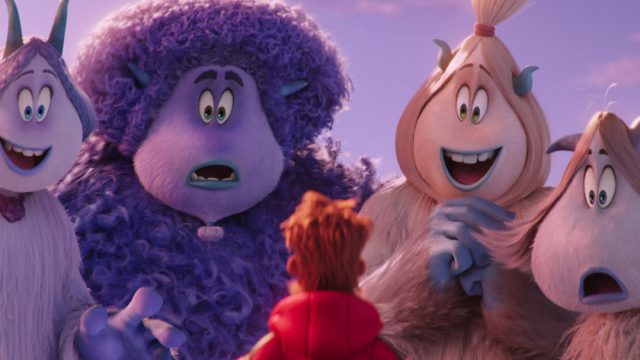
It’s all a little cleaned-up and kid-friendly, like I said, but Smallfoot does manage to strike a fairly strong balance between social themes and good-natured humour, without falling back too much on out-of-character silly moments that are only shoehorned in to amuse children. That’s why it’s too bad that everything feels hastily resolved in the end, right as the movie’s darkest moment seems like it’s going to provide a more challenging resolution. The setup is definitely better than the final execution, but Smallfoot’s personalities do at least feel enjoyable and at least semi-memorable, by contrast, especially when they’re voiced exceptionally by the well-chosen lead cast.
The concept of a human disrupting a secret society of monsters isn’t all-new territory for animated movies, considering that both Sony Pictures Animation’s Hotel Transylvania and Pixar’s Monsters Inc. were built on that same idea, most notably. Smallfoot feels like a more political and society-oriented spin on the concept however, whereas Monsters Inc. was more centered on the fundamental feelings around fear as part of the human condition, and Hotel Transylvania was built more around the distrust a disapproving parent would feel towards a would-be romantic partner for their child. Smallfoot feels like it will date a lot faster than Hotel Transylvania will, or indeed how Monsters Inc. has never done after releasing nearly two decades ago, but it still feels timely in its own right, centering a story on when truth should be explored, and when it should be withheld. In a modern world routinely suffering from xenophobia and fake news, it’s a question that makes a lot of sense, even in a movie that’s somewhat aimed at kids, who are no doubt being exposed to that stuff to some extent already.
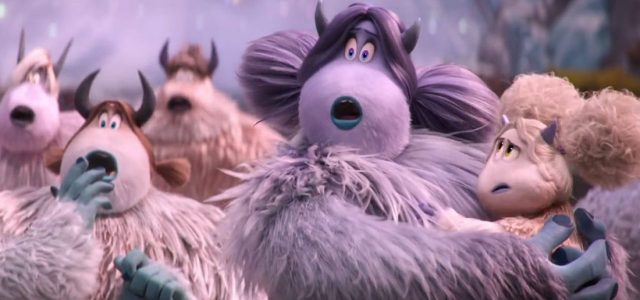
There’s the rub though; Smallfoot’s premise feels like it’s built around specific ideas that are being explored by society right now, in the modern political climate. If and when said political climate shifts in the future, Smallfoot’s storyline won’t hold together as effectively, especially since it doesn’t quite manage to bring its many inspired ideas together into a truly effective conclusion. Of course, even then, there’s enough fun and lovable moments between Migo and Percy especially to at least make Smallfoot a charming distraction for kids, with at least some worthy questions to bring to the minds of adults, regardless of whether or not you ultimately agree with its social commentary.
Smallfoot is primarily the brain child of writer-director Karey Kirkpatrick (some visual co-direction was also done by Dreamworks Animation veteran, Jason Reisig), who has only directed one other animated movie before this, that being 2006’s Dreamworks Animation flick, Over the Hedge. Kirkpatrick has written the screenplays for plenty of cult favourite family-friendly movies however, between Chicken Run, James and the Giant Peach, The Hitchhiker’s Guide to the Galaxy and, perhaps less impressively yet more lucratively, The Smurfs 2. It’s an interesting resume to say the least, but Kirkpatrick has demonstrated a flair for cleverly balancing strong narrative themes with over-the-top cartoon fun, a skill that his direction effectively brings to Smallfoot for the most part.
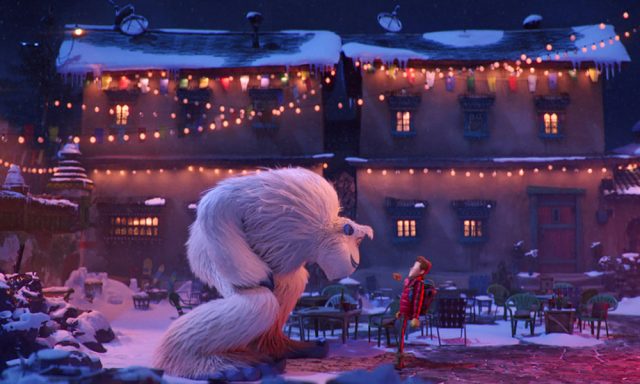
Compared to the studio’s prior projects, Smallfoot definitely feels the most relatively restrained and intellectual, which means that it places less emphasis on Warner Bros.’ trademark manic animation, and shifts the focus more to written character moments, without completely sacrificing the studio-friendly slapstick gags. This is likely why Smallfoot does a better job of appealing to adults than Storks ultimately did, but kids will still enjoy the commitment to colourful personality in Smallfoot, especially when Kirkpatrick and Reiser still present a great eye for visual direction and animated set pieces. The directing polish still isn’t quite up to the triple-A standard of Disney/Pixar or Dreamworks Animation, but it’s well-done, and comes with no shortage of fun, even if the attempts at thought and emotion aren’t always as consistently effective.
Heitor Pereira composes the score for Smallfoot, and has done the soundtracks for numerous kids’ flicks over the past several years, with varying degrees of success. Pereira isn’t above contributing to the overdone pop-heavy kids’ movie soundtracks that we so frequently see, and there is a bit of that aftertaste in Smallfoot, with some of its musical numbers even being riffs on other licensed tunes, only with the lyrics changed. Again, the fact that Smallfoot is a musical comes out of nowhere and feels mostly unnecessary, beyond that one awesome Common song, “Let it Lie” from the start of the third act, but there isn’t really anything bad or offensive about the movie’s musical score. Most of the music in the movie is pretty unmemorable however, “Let it Lie” notwithstanding, and the pop-heavy soundtrack is probably going to be another element of Smallfoot that will become very noticeably dated in the future.

The rest of the sound design mostly displays Warner Bros.’ usual commitment to energized, high-powered animation effects, even if the visual end of the animation feels a lot less hyperactive than many of the studio’s prior animated projects. Think more Iron Giant than Looney Tunes. There’s still several recognizable stock Warner Bros. audio effects throughout the movie, so it still feels like a Warner Bros. effort, but you also get just a wee bit less cartoon-y exaggeration than Warner Bros.’ usual animation efforts. That’s not to say that the audio and sound mixing are unpolished however, especially since there’s still quite a few fairly decent slapstick gags in the movie, even if they occur with less frequency than you may expect if you’re a Warner Bros. Animation regular.
Smallfoot is mostly well-animated, even if it definitely feels like the most care and attention went into the yeti society. The yeti characters are well-detailed and are mostly presented very well, particularly Migo, who has clearly had a lot of extra touches placed upon his fur effects and facial expressions. The other yeti characters are similarly well-detailed, as is their snow-covered hideaway, with the snowy landscapes appearing to glisten with an inviting sheen. The human settlement isn’t quite as impressive, especially since the human character models can often look disappointingly basic, but at least there’s some good lighting and shading during the nighttime scenes in the ‘smallfoot’ community. It is too bad that there wasn’t just a bit more flair to some of the set pieces though, especially since some of the musical numbers feel a little bit too sluggish at times, again, with, “Let it Lie” being the big, spectacular exception there.
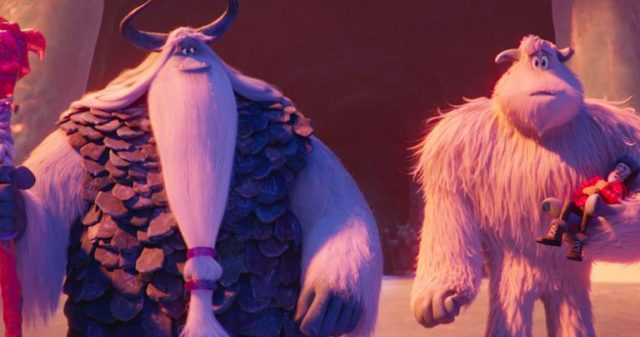
As for the 3D presentation that Smallfoot predictably boasts, it’s alright, but isn’t anything particularly essential. There are a few animation highlights in the movie that are best experienced in 3D, and the 3D cut of the movie does at least present some extra immersive environmental effects during blizzards and the like. Beyond that though, you don’t miss much by just watching Smallfoot in 2D, where it’s just as easy to appreciate the character animation and environmental effects, without much of the immersion truly lost. This is indeed some of Warner Animation Group’s finest CG animation work outside of the LEGO Movie franchise as well, especially when it’s not constantly trying to strain to hold the attention of children.
Smallfoot still undeniably stands in the shadow of Warner Animation Group’s strong trio of LEGO Movie offerings made to date, but it does manage to at least slightly improve on the fun, but excessively lightweight Storks from a couple of years ago. It’s another of the better September movies that you could check out this year, if not the best one, since adult viewers will probably find more entertaining humour and substance between both Lionsgate’s A Simple Favor and Annapurna’s The Sisters Brothers. For younger viewers though, Smallfoot’s big-thinking social themes and fairly imaginative presentation probably make it September’s biggest draw for your little ones, managing to edge out the comparably decent The House with a Clock in its Walls as far as kid-friendly September movie releases go for 2018.
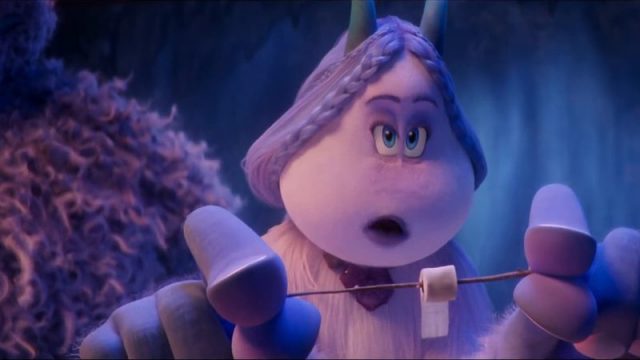
Most importantly though, Smallfoot continues to present proof of ever-growing progress for Warner Animation Group as a big screen animation studio, who have already showed that they can make some truly outstanding instant classics at their best, namely between both The LEGO Movie and The LEGO Batman Movie. The studio still seems to be feeling its way around big projects that don’t bear the LEGO Movie brand however, and this comes through in Smallfoot not finding an effective exit strategy with its storyline in the end, and demonstrating more panache with the CG animation in some areas over others. It’s certainly a strong effort for the lacklustre movie period of September, but it still feels like most of Warner Animation Group’s catalogue is stuck in September for a reason, namely because it’s still getting its act together in terms of properly and consistently competing with the big boys.
Smallfoot is still funny enough, well-animated enough and smart enough to recommend however. Like Storks before it, it’s enough to satisfy the ticket cost, even if its studio still seems capable of bigger and better things. I’m sure we’ll all be reminded of that when the next LEGO Movie drops next year.

